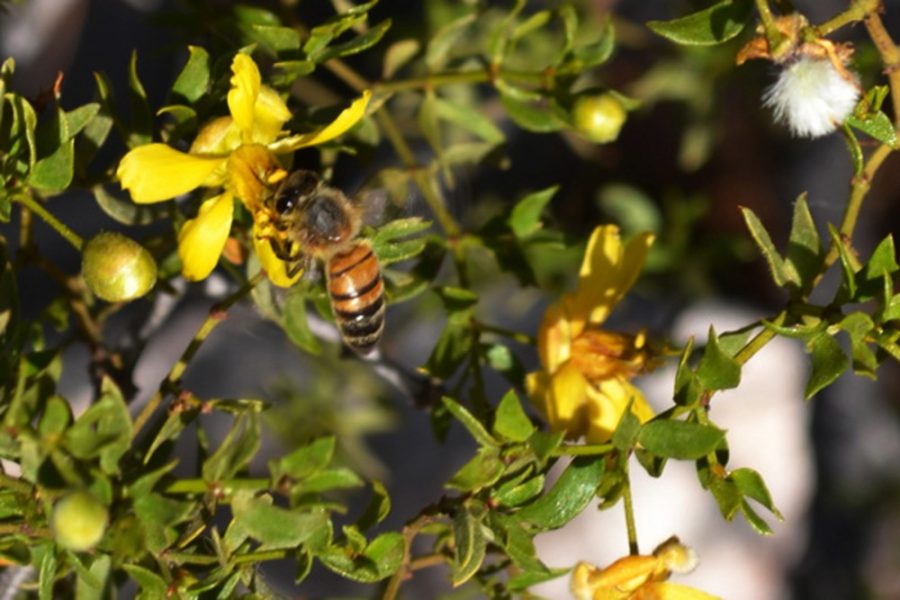Bees do it. Flies do it. Even educated UA students do it.
Native carpenter bees are doing their mating dance now and for the next few weeks at Tumamoc Hill, a popular urban hiking spot and ecological field research station for the UA.
Dance is a form of communication, even for the fuzzy, golden male carpenter bees buzzing in and out of the creosote bushes at Tumamoc.
Unlike bumblebees, carpenter bees are not social insects. This makes their mating dance a crucial part of reproduction, said Stephen Buchmann, an adjunct professor and research associate in the Department of Ecology and Evolutionary Biology.
“You don’t think that [the bees] are capable of higher communication, but that is what it is,” said Kathleen Walker, an assistant professor in the Department of Entomology.
The aggressive male carpenter bees are known for chasing other males as well as other animals, including humans, out of their territory, Buchmann said.
But as male carpenter bees do not have stingers, hikers at Tumamoc Hill don’t need to worry about being attacked on the trail. Because the hill is a research area for the UA, it is closed from 7:30 a.m. to 5:30 p.m. on weekdays.
For carpenter bees, dance communicates sexual availability.
While the carpenter bees’ display is aimed at “getting busy,” not all bees use dance for strictly sexual purposes. Bumblebees live in hives containing a queen and female worker bees, therefore, competing for a mate is less important, Buchmann said.
Walker explained that the bumblebee’s “waggle” dance is a way for them to communicate to other bees where to look for nectar, water or new hive locations.
Other species of insects, such as fruit flies, have their own mating dance, Walker said, proving that carpenter bees do not have a monopoly on dirty dancing.
Follow Michelle Kostuk
@MichelleKostuk









